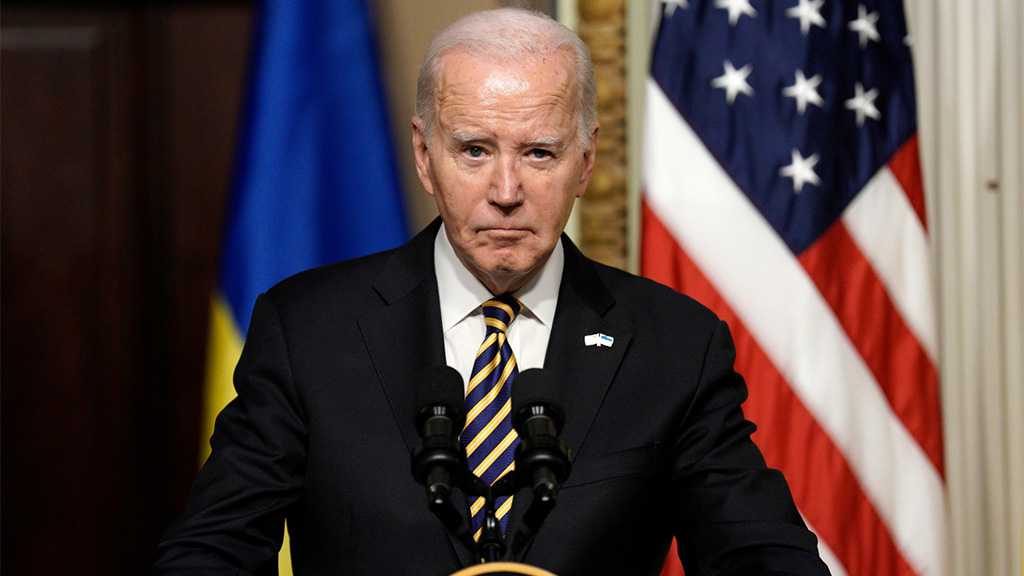
Trump Proposes a Record $4.75 Trillion Budget Including Increase in Military Spending

By staff, Agencies
US President Trump sent Congress on Monday a record $4.75 trillion budget plan that calls for increased military spending and sharp cuts to domestic programs like education and environmental protection for the 2020 fiscal year.
Trump’s budget, the largest in federal history, includes a nearly 5 percent increase in military spending — which is more than the Pentagon had asked for — and an additional $8.6 billion for construction of a wall along the border with Mexico. It also contains what White House officials called a total of $1.9 trillion in cost savings from mandatory safety-net programs, like Medicaid and Medicare, the federal health care programs for the elderly and the poor.
The budget is unlikely to have much effect on actual spending levels, which are controlled by Congress. Democratic leaders in both the House and the Senate pronounced the budget dead on arrival on Sunday, and Trump’s budgets largely failed to gain traction in previous years, when fellow Republicans controlled both chambers.
But the blueprint is a declaration of Trump’s re-election campaign priorities and the starting skirmish in the race for 2020, as both Republicans and Democrats try to carve out their messages to appeal to voters.
The president’s budget quickly antagonized Democrats while making clear the contours of how he plans to run for re-election. It is replete with aggressively optimistic economic assumptions and appeals to his core constituents, and it envisions deep cuts to programs that Democrats hold dear. Yet it projects trillion-dollar deficits for the next four years and does not balance the budget for 15 years.
Senator Chuck Schumer of New York, the Democratic leader, called the proposal “a gut punch to the American middle class.” He said Trump’s requested cuts to Medicare, Medicaid and Social Security, “as well as numerous other middle-class programs, are devastating, but not surprising.”
The budget would curb the growth of Medicare and Medicaid, two programs Trump had previously pledged to leave intact. And it proposes shaving $818 billion from projected spending on Medicare over 10 years and cutting nearly $1.5 trillion from projected spending on Medicaid.
Trump also proposed new work requirements for working-age adult recipients of food stamps, federal housing support and Medicaid, a move the administration said would reduce spending on those programs by $327 billion over a decade because it would disqualify many who currently receive assistance.
Payments to a variety of health care providers would also be cut. Medicare payments to hospitals for unpaid bills and uncompensated care would be reduced by $136 billion over 10 years. Trump would cut projected Medicare payments to hospital outpatient departments by $131 billion over 10 years.
In addition, the budget squeezes more than $100 billion over 10 years from Medicare payments to nursing homes and home health agencies that care for Medicare patients who have left the hospital.
Trump proposed spending $26 billion less on Social Security programs, the federal retirement program, including a $10 billion cut to the Social Security Disability Insurance program, which provides benefits to disabled workers. Those cuts would be achieved in various ways, including more aggressively policing fraud in the program.
The largest reductions would come from spending on discretionary domestic programs, outside of the military, which would be cut by $1.1 trillion over the course of a decade.
Significant reductions are also requested at other agencies responsible for the United States’ energy and environmental policies, including a 70 percent cut in renewable energy research and the elimination of climate science programs across an array of agencies.
The administration requested $31.7 billion for the Energy Department, an 11 percent drop from current funding. It targeted the Interior Department for a 14 percent decrease, dropping its overall budget to $12.5 billion.
While Congress is unlikely to accept most of the changes, they underscore the Trump administration’s commitment to unraveling Obama-era environmental regulations — particularly those addressing climate change — and to prioritizing the development of fossil fuel resources.
For the third year in a row, Trump’s budget would also cut funding for the Education Department, this time by 10 percent.
Budget details released by White House officials highlight several areas of conflict between Democrats and Trump, starting with immigration enforcement. Along with renewing the wall funding fight that led to a record government shutdown late last year.
“This budget is a recipe for American decline,” said Representative John Yarmuth, Democrat of Kentucky and the chairman of the House Budget Committee. “It’s laughable that this budget is subtitled ‘Promises Kept,’ because in fact there are a lot of promises that have been violated in this budget.”
“This is a budget that we will not take seriously when we are working on our budget and spending priorities for 2020,” he said.
Disapproval from Democratic presidential candidates was just as blunt. “This is a budget for the military industrial complex, for corporate C.E.O.s, for Wall Street and for the billionaire class,” Senator Bernie Sanders, independent of Vermont, said in a statement. “It is dead on arrival.”
Even some prominent Republicans greeted the president’s request somewhat coolly because it did not go far enough to reduce the growing national debt.
Comments



